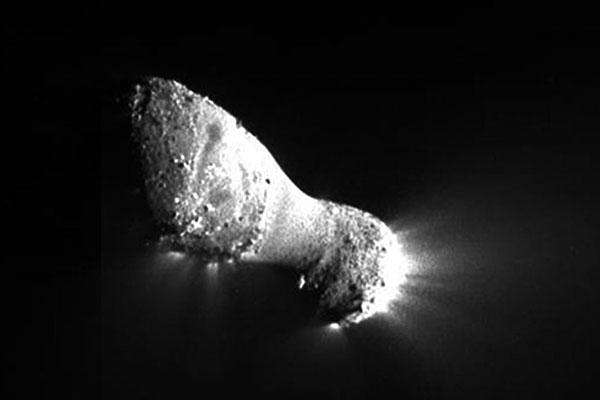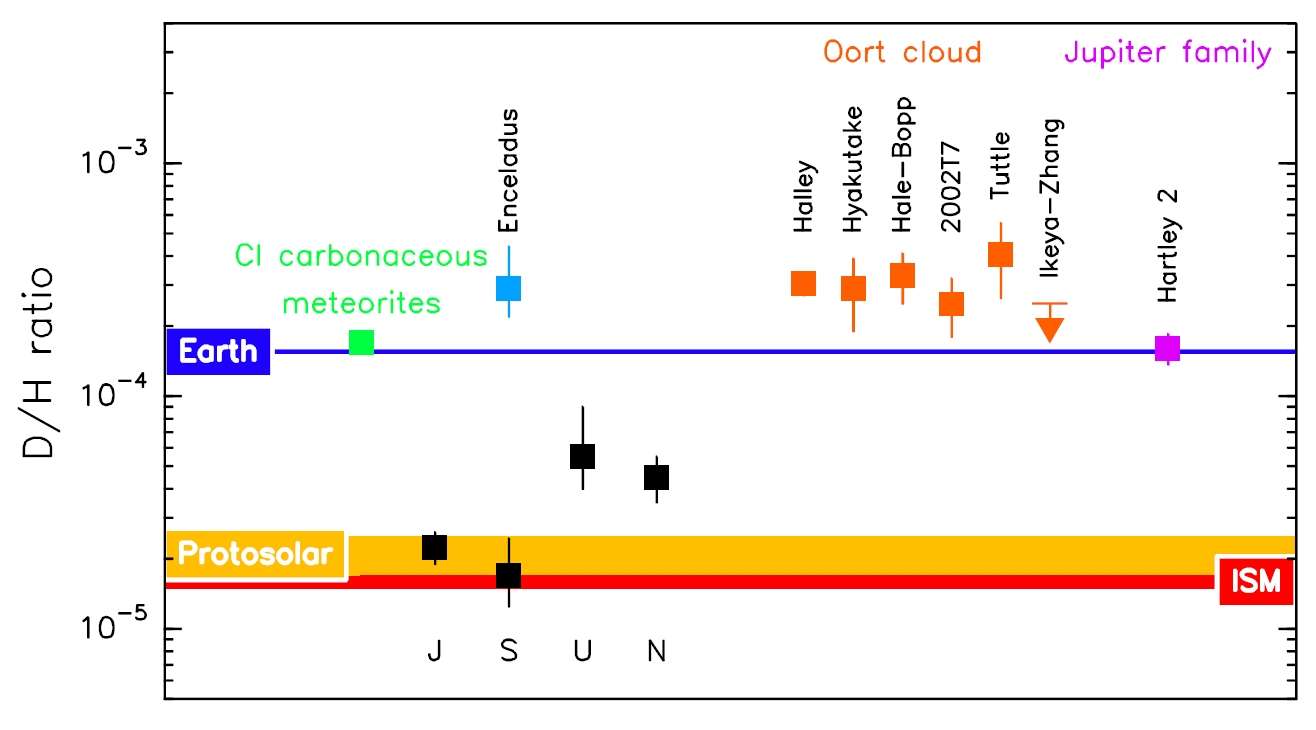The existence of earth's oceans has been a mystery challenging earth scientists for decades because the source of the water could not be identified. Extremely low levels of the element Neon and other geochemical indicators, point to an early earth that lost most of its volatiles, including water. But if early earth lost most of its water because of large collisions, or if it never had much water, where did the water come from. That was the mystery. Infalling icy comets were proposed as source of water but there was a problem that cometary water had properties that didn't match the earth's oceans.
There are two types of stable hydrogen. Ordinary hydrogen consists of one proton and one electron. Heavy hydrogen, also known as deuterium, has one proton, one neutron and one electron. Both ordinary hydrogen and deuterium for formed in the first seconds of the big bang. Deuterium has a very interesting property. It undergoes nuclear fusion at a very low temperature compared to regular hydrogen and other elements. That's why deuterium is be used in nuclear fusion research. This property of deuterium causes it to be rapidly depleted by a developing star. Deuterium is also highly depleted relative to hydrogen in regions of space that are rich in stars.
Here's the problem that has been confounding earth scientists. Comets from the far edge of the solar system called the Oort cloud are rich in deuterium vs hydrogen. The gas giant planets are significantly deuterium depleted. The sun and the inner planets are highly depleted in deuterium vs hydrogen, except for earth where the earth's deuterium/hydrogen ratio is set as the standard for comparison. The fact that earth's deuterium hydrogen ratio is much higher than found in all the other planets is consistent with a non-planetary source, but Oort cloud comets have too much deuterium to be the source of earth's oceans.
There's a smaller group of comets, closer to earth, affected by the gravity of the planet Jupiter, called the Jupiter family. They are found in a region outside of the orbit of the planet Neptune called the Kuiper belt.
Comet Hartley2 is a Jupiter family comet with a short period of 6 years.
Image may be NSFW.
Clik here to view. Comet Hartley2 image source:NASA
Comet Hartley2 image source:NASA
NASA and the European Space Agency gave the Herschel space probe the mission of measuring the deuterium/ hydrogen ratios of Comet Hartley 2. They published the results yesterday, October 5, in the Journal Nature.
The ratio of deuterium to hydrogen in the comet Hartley2 is a perfect match to the water in earth's oceans.
Image may be NSFW.
Clik here to view.
Image source: ESA
This discovery supports the theory that a strong infall of comets from the Jupiter belt in earth's first 700 million years was the primary source of the water in the oceans. This article in nature discusses the late heavy bombardment which may have played a role in increasing the amount of water on earth.
